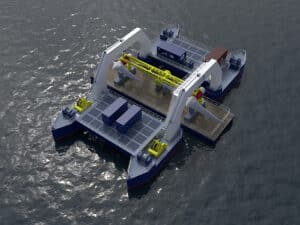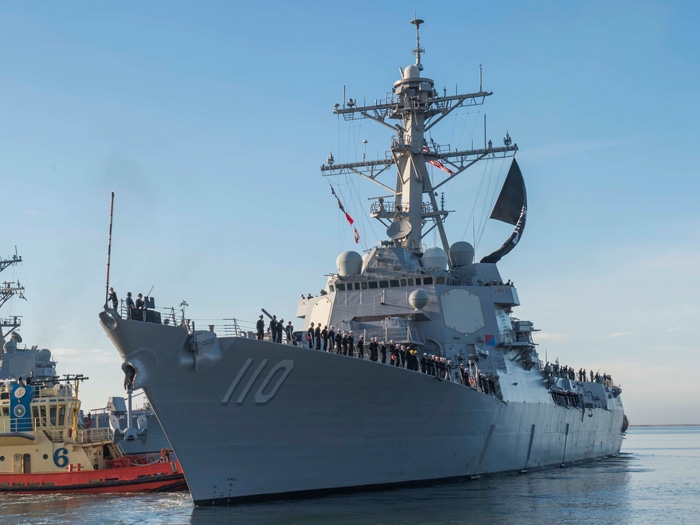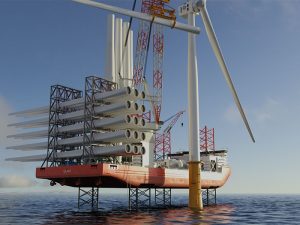
Navy kicks off Great Green Fleet alternative fuel initiative
Written by Nick Blenkey
Arleigh Burke-class guided-missile destroyer USS William P. Lawrence (DDG 110)
JANUARY 21, 2016 — The Arleigh Burke-class guided missile destroyer USS Stockdale (DDG 106) left the pier at Coronado, CA, yesterday burning a fuel that’s a mixture of waste beef fat and traditional petroleum based feedstock, becoming the first U.S. Navy ship running on an alternative fuel blend as part of its regular operations.
It’s all part of what the Navy calls the Great Green Fleet initiative and Secretary of the Navy Ray Mabus and Secretary of Agriculture Tom Vilsack were on hand yesterday to kick it off with a ceremony to mark the deployment of the USS John C. Stennis Carrier Strike Group (JCS CSG)
The Great Green Fleet initiative, according to the Navy, highlights “how the Navy and Marine Corps are using energy efficiency and alternative energy to increase combat capability and operational flexibility.”
“When it comes to power, my focus has been about one thing and one thing only: better warfighting,” said Secretary Mabus. “The Great Green Fleet shows how we are transforming our energy use to make us better warfighters, to go farther, stay longer and deliver more firepower. In short, to enable us to provide the global presence that is our mission.
“Diversifying our energy sources arms us with operational flexibility and strengthens our ability to provide presence, turning the tables on those who would use energy as a weapon against us.”
The advanced fuel blend being used by the JCS CSG was produced by California-based AltAir Fuels from a feedstock of beef tallow – waste beef fat – provided by Midwest farmers and ranchers, and traditional petroleum provided by Tesoro.
Pursuant to Navy requirements, the alternative fuel is drop-in, meaning it requires no changes to ship engines, transport or delivery equipment, or operational procedures.
The Defense Logistics Agency awarded a contract to AltAir Fuels for 77.6 million gallons of the alternative fuel blend, at a cost to DLA of $2.05 per gallon, making it cost competitive with traditional fuel.
Through the Commodity Credit Corporation, USDA is able to partner with the Navy to help diversify its fuel supply and simultaneously support America’s own farmers, ranchers and rural economies.
“The Navy’s use of renewable energy in the Great Green Fleet represents its ability to diversify its energy sources, and also our nation’s ability to take what would be a waste product and create homegrown, clean, advanced biofuels to support a variety of transportation needs,” said Secretary Vilsack. “Today’s deployment proves that America is on its way to a secure, clean energy future, where both defense and commercial transportation can be fueled by our own hardworking farmers and ranchers, reduce landfill waste and bring manufacturing jobs back to rural America.”
JCS CSG, the centerpiece of the Great Green Fleet, deployed using energy conservation measures (ECMs), including stern flaps, LED lights and energy efficient operational procedures, and alternative fuel in the course of its normal operations. Other ships, aircraft, amphibious and expeditionary forces and shore installations using ECMs and/or alternative fuels in the course of performing planned mission functions will be part of the Great Green Fleet throughout 2016.
Following the ceremony, Secretaries Mabus and Vilsack flew out to the destroyer USS William P. Lawrence (DDG 110) to witness it replenishing its tanks with alternative fuel from fleet replenishment oiler USNS Guadalupe (T-AO 200).
The remainder of the CSG’s surface ships will receive fuel from fast combat support ship USNS Rainier (T-AOE 7), which will take on over three million gallons of the alternative fuel blend in Washington state before joining the CSG on deployment.
Interestingly, the Navy story on this first Great Green Fleet deployment didn’t use the word “biofuel” once. And though that term may conjure up thoughts of algae, grass and the light, most definitions do say that animal products can be a biofuel component.





Leave a Reply
You must be logged in to post a comment.